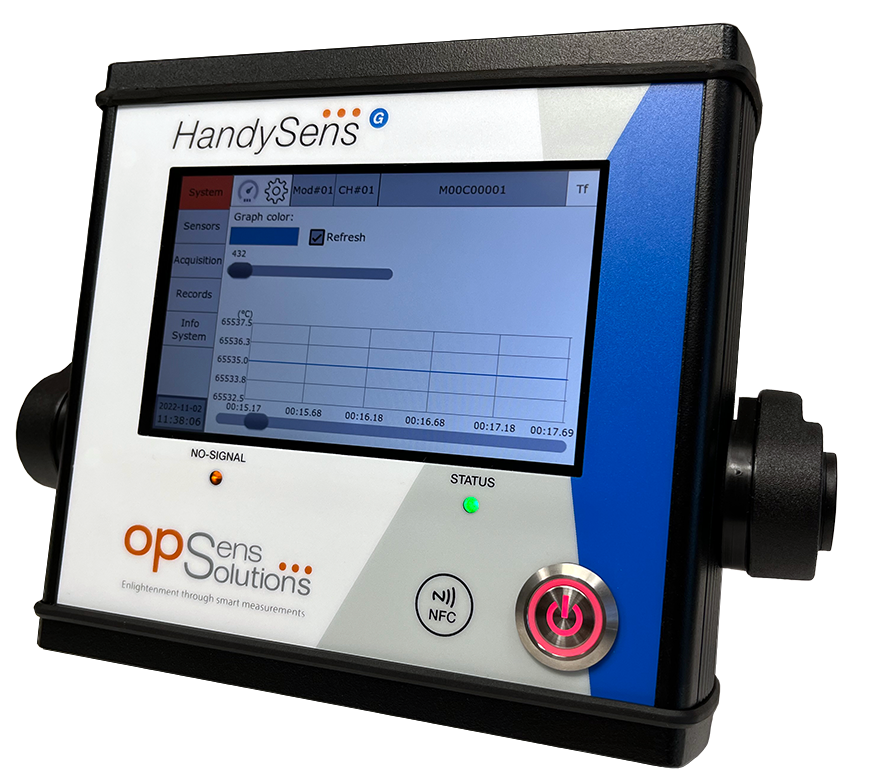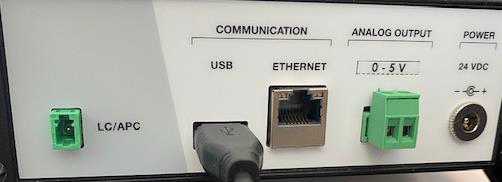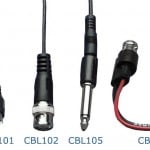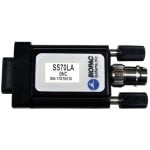The analog output parameters comprise the scale factor and the offset. The scale factor corresponds to the physical unit per Volt (unit/V) output by the system, while the offset corresponds to the physical value at which the user wants the analog output to be at zero volt. For example, with a scale factor set to 10 °C / V and the offset set to 5 °C, the temperature as a function of the analog output voltage is given by:
Temperature = [Voltage output] x 10 °C / V + 5 °C
The default value of the scale factor is 50 °C / V (or its equivalent in °F) and the default value of the offset is 0 °C (or its equivalent in °F).
During a No Signal condition, constant values are output as follows: analog output value = 0 Volt, RS-232 serial ports = 65 536.0.
For more details, please see the complete FOTS100 User Manual, available under the Support tab.
Interface with BIOPAC
To interface this stand-alone system to a BIOPAC MP System, add the specified cable(s), purchased separately:
MP160 System: add CBL101 3.5 mm mono phone plug to male RCA + CBL122 Unisolated RJ11 to 3.5 mm Jack
MP150 or MP100 System: add CBL101 3.5 mm mono phone plug to male RCA
MP36/35 System: add SS70LA isolated BNC interface and a BNC-to-RCA cable (separate purchase).
Magnetic Sensitivity
Comparison of FOTS Signal Conditioners available from BIOPAC:
FOTS100A
When exposed to strong magnetic field, the GaAs sensor used with the FOTS100 will see an artificial shift in temperature : Magnetic field Shift in T° (approximately) This shift does not depend on field orientation and is very reproducible in a given setup, hence it can be easily factored out by the user. The values at field strength come from the following article: Buchenberg, W.B., Dadakova, T., Groebner, J., Bock, M. and Jung, B. (2015), Comparison of two fiber‐optical temperature measurement systems in magnetic fields up to 9.4 Tesla. Magn. Reson. Med., 73: 2047-2051. doi:10.1002/mrm.25314 |
FOTS200
The TSD380 series sensor probes associated with the FOTS200 readout unit have an optical sensing element that is insensitive to magnetic field, hence, there is no maximum magnetic field specification, which is a nice advantage in high-field MRI applications. However this technology has some disadvantages: it is more expensive; the probe cannot be made to a diameter smaller than 1.2 mmm O.D. |
For more details, please see the complete FOTS100A User Manual, available under the Support tab.
Product Family
Product Type
Platform Options
FOTS Features
- Handheld Signal Conditioner for (GaAs) Technology
- Sampling Rate of 250 Hz
- Supports a Broad Range of Temperature Sensors
- Large Convenient Touchscreen Display
- Compact & Rugged Design
- Portable Battery Operated Unit
- Ethernet & USB Interface






Stay Connected